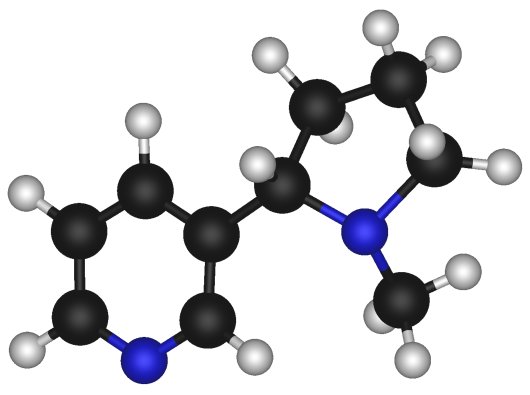|
How Addiction to Nicotine Worksby Angelina Petterson
Nicotine is discharged through smoking tobacco or smokeless tobacco such as chewing tobacco. When a person smokes or chews tobacco, nicotine enters the blood stream and rushes to the brain which it reaches within 15 seconds of a puff. When in the blood the nicotine drug operates as molecule. It quickly switches to its metabolite cotinine as it stays longer in the body system. Once in the brain nicotine attaches itself to receptors which it triggers to release dopamine a neurotransmitter that is responsible for a pleasurable smoking experience.This process when repeated drives the brain to a point of dependency. This is how nicotine dependency is achieved.
Individuals addicted to nicotine find it very difficult to function without constantly supplying their system with the drug. This is the reason behind smokers requiring to smoke every 45 minutes to an hour. The number of cigarettes one smokes a day and the length of time they have been smoking in terms of months and years also plays a part in the whole matrix of addiction to nicotine. To be addicted to nicotine an individual would not need anything more than sustained enough levels of nicotine. For this reason a significant number of people have reported nicotine chewing gum addiction running into years. Nicotine addiction appears to also depend on the maturity of the brain receiving it. Teenage tobacco users seem to easily get addicted to nicotine than adults due to their maturing brains. Often this leads to teenage brain damage. Research has shown that most adult smokers started smoking earlier on in their teens years. Addiction to nicotine is very difficult to reverse. New advanced medical solutions such as the smoking vaccine aim to help nicotine addicts by standing in the way of nicotine molecule transportation to an expectant brain. This way smoking will become a waste of time that produces no pleasure. Medical research done so far indicate unprecedented effectiveness of nicotine vaccines.
Return to Articles on Tobacco and Health from How Addiction to Nicotine Works
|




 Once the brain is addicted it becomes extremely difficult to wean it off this dependency. Any attempt to cease supplying regular nicotine doses will result in often
Once the brain is addicted it becomes extremely difficult to wean it off this dependency. Any attempt to cease supplying regular nicotine doses will result in often  Quitting smoking is admittedly hard yet it can be done. Studies show that following a stop smoking program and using
Quitting smoking is admittedly hard yet it can be done. Studies show that following a stop smoking program and using